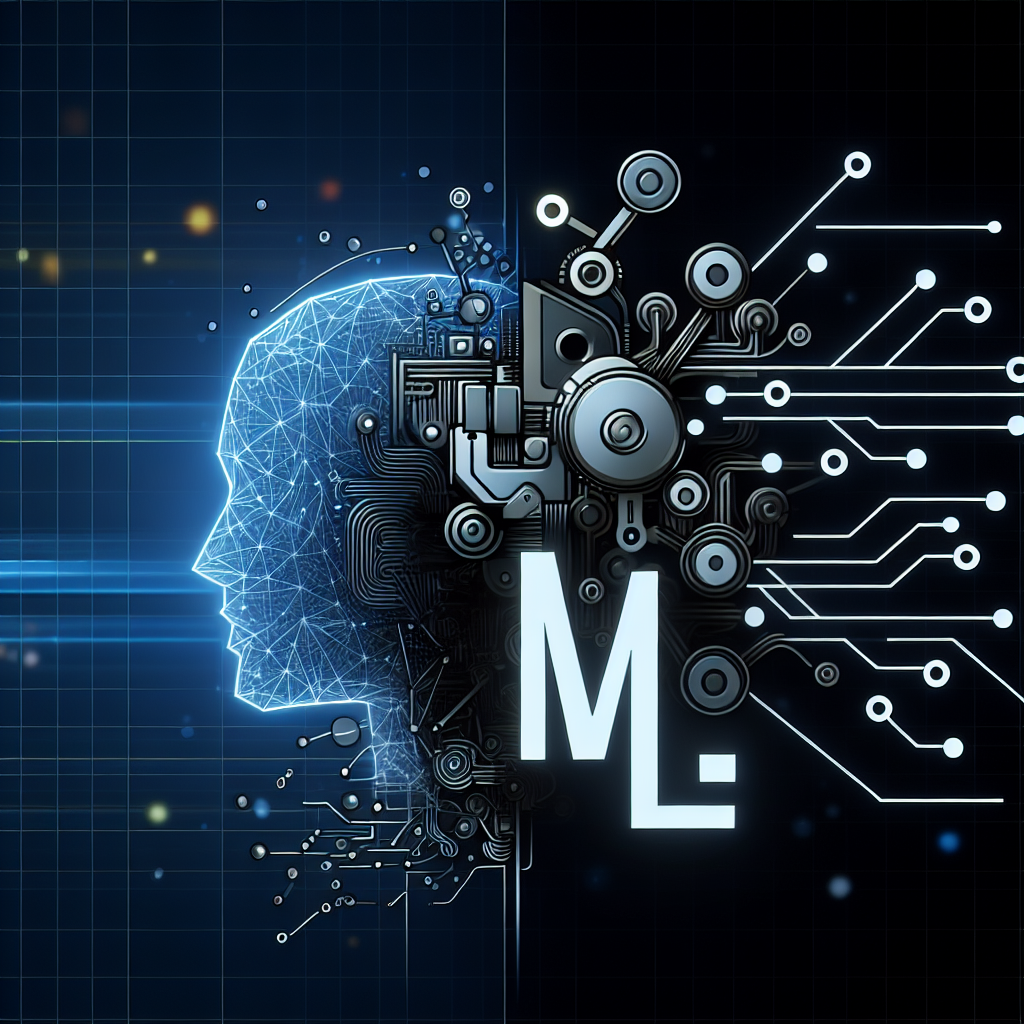Artificial Intelligence (AI) and Machine Learning (ML) are two of the most innovative technologies in the world today. Both have the potential to revolutionize industries, improve efficiency, and enhance our daily lives. But which technology is more innovative? In this article, we will explore the differences between AI and ML, their applications, and discuss which technology is more innovative.
AI vs ML: What’s the Difference?
Artificial Intelligence (AI) is a broad field of computer science that aims to create machines that can simulate human intelligence. AI systems are designed to perform tasks that typically require human intelligence, such as decision-making, problem-solving, and understanding natural language. AI can be further divided into two categories: Narrow AI and General AI.
Narrow AI, also known as Weak AI, is designed to perform specific tasks, such as facial recognition, speech recognition, and recommendation systems. Narrow AI systems are trained on specific data and are limited in scope. They can excel at a specific task but lack the ability to generalize.
General AI, also known as Strong AI or Artificial General Intelligence (AGI), aims to create machines that can perform any intellectual task that a human can. General AI systems would have the ability to understand, learn, and reason across a wide range of tasks and domains. However, achieving General AI is still a long way off and remains a topic of ongoing research.
On the other hand, Machine Learning (ML) is a subset of AI that focuses on developing algorithms that can learn from data. ML algorithms are designed to improve their performance over time without being explicitly programmed. ML algorithms can be divided into three main categories: supervised learning, unsupervised learning, and reinforcement learning.
Supervised learning involves training a model on labeled data, where the input data and the corresponding output labels are provided. The model learns to map input data to output labels and can make predictions on new, unseen data. Supervised learning is commonly used in tasks such as image recognition, speech recognition, and natural language processing.
Unsupervised learning involves training a model on unlabeled data, where the model learns to find patterns and structures in the data without explicit guidance. Unsupervised learning is used in tasks such as clustering, anomaly detection, and dimensionality reduction.
Reinforcement learning involves training a model to make sequential decisions in an environment to maximize a reward. The model learns through trial and error, receiving feedback from the environment based on its actions. Reinforcement learning is used in tasks such as game playing, robotics, and autonomous driving.
Applications of AI and ML
AI and ML have a wide range of applications across various industries, including healthcare, finance, retail, and transportation. Some of the most common applications of AI and ML include:
1. Healthcare: AI and ML are used in medical imaging, disease diagnosis, drug discovery, and personalized medicine. AI-powered systems can analyze medical images, predict patient outcomes, and recommend treatment plans.
2. Finance: AI and ML are used in fraud detection, risk assessment, algorithmic trading, and customer service. AI-powered systems can analyze financial data, detect anomalies, and make investment decisions.
3. Retail: AI and ML are used in inventory management, demand forecasting, personalized recommendations, and customer service. AI-powered systems can predict consumer behavior, optimize pricing strategies, and enhance the shopping experience.
4. Transportation: AI and ML are used in route optimization, traffic prediction, autonomous vehicles, and ride-sharing services. AI-powered systems can reduce travel times, improve safety, and reduce emissions.
Which Technology is More Innovative?
Both AI and ML are innovative technologies that have the potential to transform industries and improve our daily lives. However, in terms of innovation, AI is often considered more groundbreaking than ML. AI encompasses a wider range of capabilities, including reasoning, planning, and problem-solving, while ML focuses on learning from data.
AI has the potential to create machines that can replicate human intelligence across a wide range of tasks and domains. General AI, in particular, has the potential to revolutionize society by creating machines that can think, learn, and reason like humans. While General AI remains a distant goal, the progress in AI research and development is accelerating, leading to the creation of increasingly sophisticated AI systems.
On the other hand, ML is a more specialized field that focuses on developing algorithms that can learn from data. ML algorithms have been incredibly successful in tasks such as image recognition, speech recognition, and natural language processing. ML has also been instrumental in the development of autonomous vehicles, personalized recommendations, and predictive analytics.
In terms of innovation, AI is often seen as more groundbreaking because of its potential to create machines that can perform any intellectual task that a human can. While ML has made significant advances in specific tasks, such as image recognition and natural language processing, it is ultimately limited by the data it is trained on. AI, on the other hand, has the potential to reason, plan, and adapt to new situations, making it a more innovative technology overall.
FAQs
Q: What is the difference between AI and ML?
A: AI is a broad field of computer science that aims to create machines that can simulate human intelligence. ML is a subset of AI that focuses on developing algorithms that can learn from data.
Q: What are some common applications of AI and ML?
A: Some common applications of AI and ML include healthcare, finance, retail, and transportation. AI and ML are used in medical imaging, fraud detection, personalized recommendations, and route optimization, among other things.
Q: Which technology is more innovative, AI or ML?
A: AI is often considered more innovative than ML because of its potential to create machines that can replicate human intelligence across a wide range of tasks and domains. AI has the potential to reason, plan, and adapt to new situations, making it a more groundbreaking technology overall.

